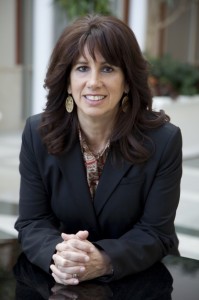This is the second blog in a three-part series.
As technology that makes it possible to quickly sequence an individual’s whole genome becomes increasingly more available and affordable, people have begun to wonder about its ability to predict diseases a person is likely to develop. If I had my whole genome sequenced, could it reveal whether or not I will develop cancer in the future? This is among the questions leading cancer genetics expert Dr. Bert Vogelstein and colleagues set out to answer.
For their experiment, they turned to a database of 53,666 identical twins. Why twins? Twins are natural clones, and as such, they share the same genome. Generally speaking, if one follows one twin over a period of time to catalog all of the diseases he or she develops and then compares it to the other twin, measuring how often he or she developed the same diseases, one can calculate inherited genetic risk for these diseases.
What many overlook in whole genome sequencing, particularly as it relates to cancer, is not about what it reveals, but rather what it does not.
Ovarian cancer is a perfect example. Their study predicted that about two percent of women who would undergo whole genome sequencing would get a positive result and alert them to an inherited genetic risk for ovarian cancer. On the other hand, 98 percent of women would get a negative test result. That doesn’t mean these women won’t get cancer—based on ovarian cancer incidence rates, we know that many of them will. It just means that we cannot predict which ones will develop the cancer and which ones will not.
We can look at this in another way. There are 156 million women in the United States today. Based on current ovarian cancer rates, we can estimate that about 2.2 million of them will develop ovarian cancer sometime in their lives. Vogelstein and group say that whole genome sequencing could with much further research, in theory, identify about 500,000 of them. Most of them—1.7 million of them—would have no sign of their impending cancers.
Where does that leave us then?
Our experts have said it many times, but it bears repeating. The best way to manage cancer risk is through prevention and early detection. It bears repeating yet again. THE BEST WAY TO MANAGE CANCER RISK IS THROUGH PREVENTION AND EARLY DETECTION.
So, let’s review. Remember, people are rarely born with a cancer-causing genetic alteration. Cancer is usually the result of accumulating edits made to the DNA of certain cells. It would be a good idea, then, to eliminate from our lives, as much as possible, those things we know make these cancer-starting edits to cell DNA:
- Quit smoking (better yet, don’t start).
- Maintain a healthy weight and diet.
- Limit alcohol consumption.
- Exercise regularly.
- Protect skin from the sun.
- Reduce, if possible, medical exposures to radiation (X-rays, etc.).
- Know your family history, and if you have an inherited cancer-related mutation or syndrome, talk to your doctor about preventive strategies.
- Prevent on the job exposures to carcinogens such as asbestos.
- Women, talk to your doctors about avoiding hormone replacement therapy at menopause as it increases breast cancer risk.
- Get vaccinated against known cancer-causing viruses. (The hepatitis B vaccine can prevent certain types of liver cancer. The Gardasil vaccine prevents HPV (human papillomavirus) infection, a common sexually transmitted virus that causes the majority of cervical cancers and more than half of oral cancers.)
If we do just these things—applying the science we understand today to strengthen cancer prevention—we could reduce cancer incidence by a remarkable 54 percent, according to a recent study published in the March 2012, issue of Science Translational Medicine.
Part One of Sequencing Our Genes: Is Cancer Written in our DNA?
Stay tuned for Part Three in Sequencing Our Genes, which will discuss the promise of sequencing tumor genomes.
